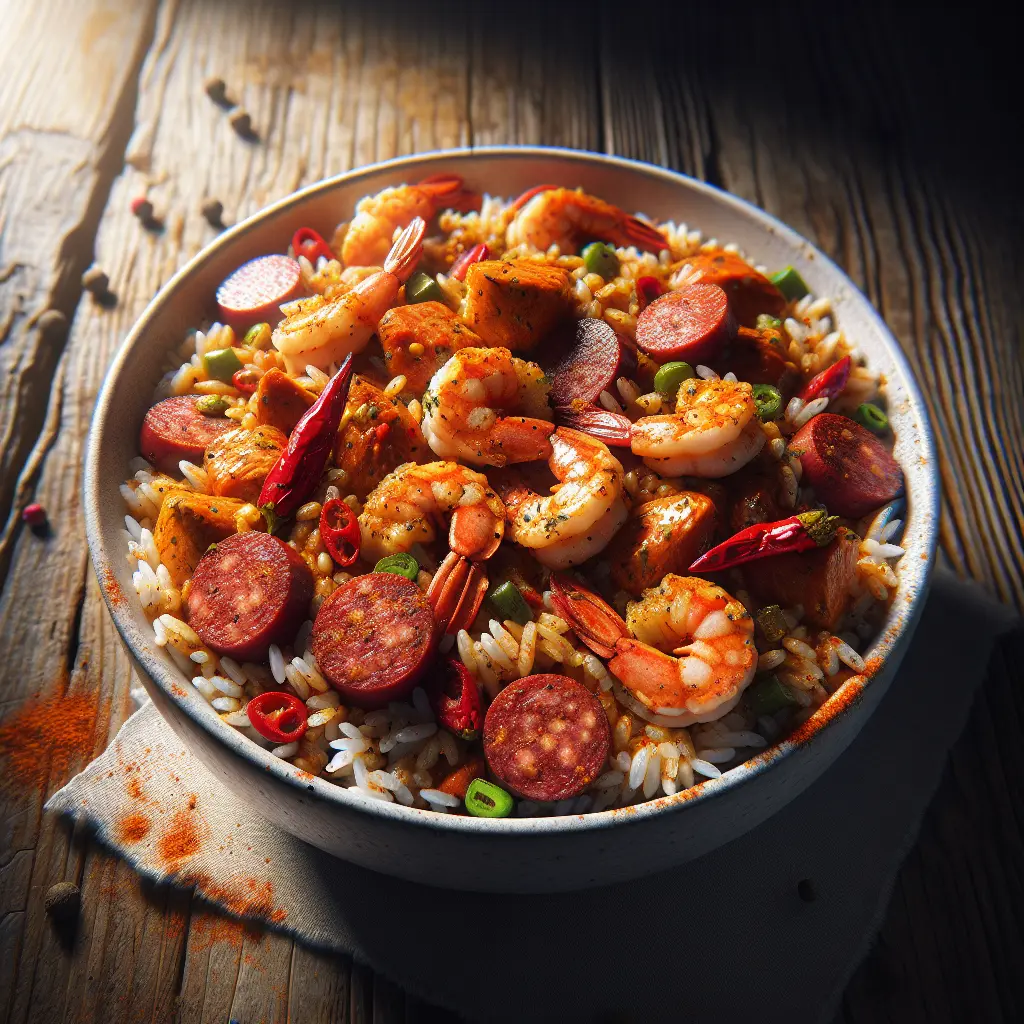A Taste of History
Jambalaya has a rich culinary heritage, with its roots traced back to the 18th century. It is believed to have originated in the French Quarter of New Orleans, where Spanish and French settlers combined their culinary traditions to create this unique dish. The name 'jambalaya' is thought to derive from the Spanish word 'jambalaia,' which means 'a mixture of rice and meat.'
The Essence of Jambalaya
The essence of jambalaya lies in its flavorful combination of ingredients. It typically includes a protein base of chicken, sausage, or seafood, along with a medley of vegetables such as bell peppers, onions, and celery. The dish is seasoned with a blend of Cajun spices, including paprika, cayenne, and thyme. The addition of long-grain rice provides a starchy foundation that absorbs the savory juices and creates a hearty base.
Variations and Adaptations
Jambalaya is a versatile dish that can be customized to suit your taste preferences. Here are a few popular variations:
- Chicken and Sausage Jambalaya: This is a classic combination that combines the savory flavors of chicken and sausage. The use of both dark and white meat chicken adds depth to the dish.
- Seafood Jambalaya: For a coastal twist, seafood jambalaya features an assortment of shrimp, oysters, and crab. The delicate flavors of the seafood complement the spicy seasoning perfectly.
- Vegetarian Jambalaya: This meatless version of jambalaya offers a hearty and flavorful alternative. Plant-based proteins such as tofu or beans can be used to provide a satisfying texture and nutritional value.
How many calories are in Jambalaya?
Each 1 serving of Jambalaya contains 768 calories.
Jambalaya Nutritional Information
| Nutrient | Amount per 1 serving (493g) |
|---|---|
| Calories | 768 Calories |
| Protein | 35g |
| Fat | 36g |
| Saturated Fat | 9.3g |
| Cholesterol | 0.146mg |
| Carbohydrates | 73g |
| Dietary Fiber | 2g |
| Sugar | 3.6g |
| Sodium | 2.524mg |
| Potassium | 0.8311mg |
| Calcium | 0.085mg |
| Iron | 0.0025mg |
